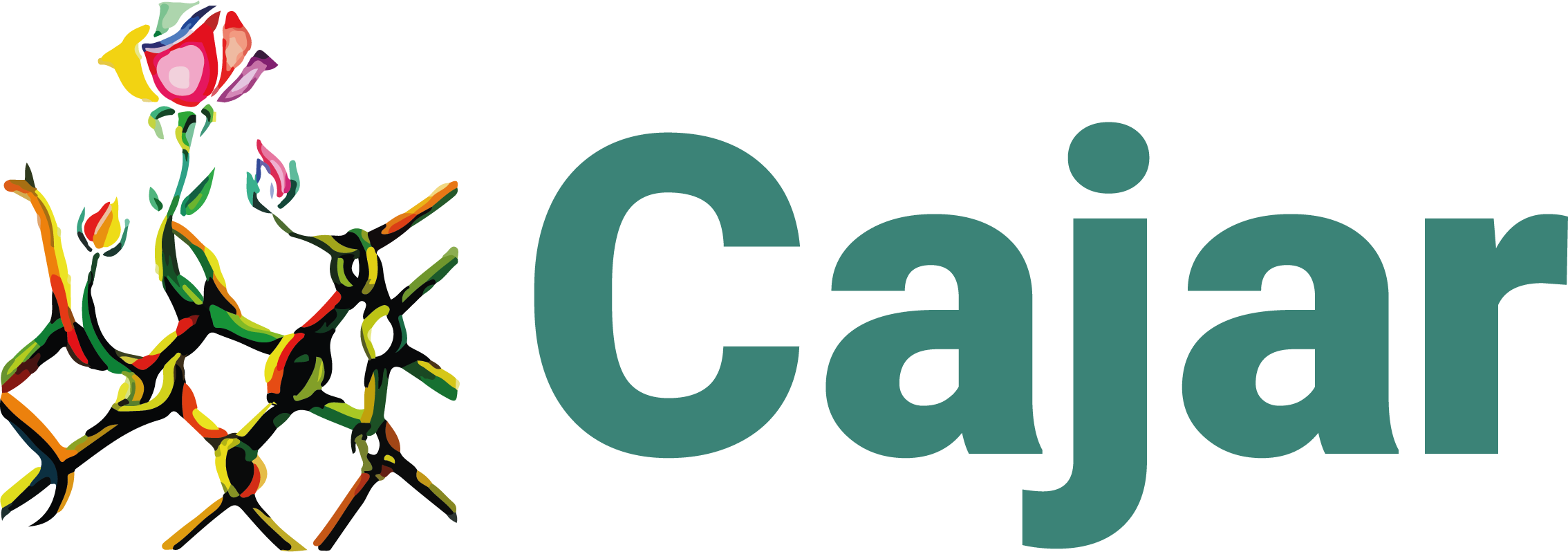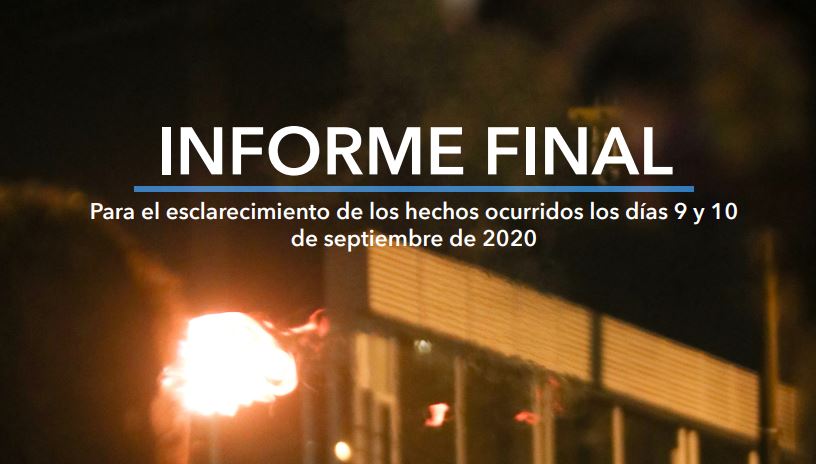The Rapporteurship for the clarification of the events of September 9, 10 and 11, 2020 in the city of Bogotá was established as an ad hoc mechanism to promote the State’s response to the serious human rights violations that occurred in the context of social protest. It responds to the urgency of evaluating the problems facing the recognition and regulation of the right to peaceful protest in Colombia. As well as to understand the reasons that led to a reprehensible act by police officers against a citizen to lead to a day of violence unprecedented in the recent history of the capital of the Republic and the municipality of Soacha.
For this reason, at the beginning of this year, the Mayor of Bogotá, Dr. Claudia López, requested the United Nations System to constitute an independent rapporteurship that, under academic and extrajudicial command, and with an ethical and autonomous perspective, would complement the investigative work of the judicial and disciplinary authorities, and allow the Administration to understand what happened and adopt measures for conflict management, the promotion of democratic dialogue and the prevention of recurrence.
Final Report, Clarification S9, VF
EXECUTIVE OVERVIEW
- The events of violence, abuse and police brutality that began in the early morning of September 9 with the murder of Javier Ordóñez at the hands of members of the National Police (PONAL) triggered one of the most serious episodes of human rights violations in the history of the city of Bogotá.
- The Rapporteurship documented the deaths of 14 people in this context of violence, including the case of Javier Ordóñez, for whom the demonstration was initiated. Of the 14 fatalities, 11 were allegedly as a result of the unlawful use of force by PONAL agents.
- The foregoing allows this Rapporteurship to conclude that in the context of the protests of September 9 and 10, a massacre occurred (1) for which PONAL is responsible.
- Two other murders occurred as a result of interventions by people in civilian uniforms who used firearms against demonstrators and third parties. One of them, Cristian Alberto Rodríguez Cano, so far has not been recognized by the authorities as part of the cases that occurred within the framework of the 9S demonstrations.
- During the days of protests on September 9 and 10, seven violent practices were identified and documented by this Rapporteurship: unlawful use of force, violence against public forces, arbitrary detentions, gender-based violence (GBV), stigmatization of social protest, violence against public and private property, and impunity.
- These practices explain, in addition to the 14 murders, the injuries of at least 75 people by firearms, 43 by sharp weapons, 187 by other types of injuries, and the injuries caused to at least 216 members of PONAL. They also report the damage caused to 78 buses of the trunk component (nine of them burned), 51 buses of the zone component (five burned) and 76 CAI (17 of them burned and destroyed).
- One of the citizen expressions of indignation against what happened to Javier Ordóñez in the early morning of September 9 was the use of violence against public and private property, particularly those representing the police institution, institutionality and order. As a consequence of these expressions, Mrs. María del Carmen Viuvche was run over and killed when a group of people assaulted a public bus, attacked her and caused her death.
- The most representative and widespread practice during these days of protests was the unlawful use of force by members of PONAL. This Rapporteurship concludes that PONAL openly disregarded the principles of proportionality and strict necessity.
- PONAL and civilian authorities share institutional responsibilities regarding the use of lethal force in the framework of the spontaneous demonstrations on 9S, mainly for the omission of measures for the protection of the rights to life and integrity of the demonstrators, third parties and PONAL uniformed personnel.
- The indiscriminate use of firearms in these days was determined by:
a. The lack of an express and hierarchical order not to shoot, as part of the supervision and control functions of the civilian and police authorities in the face of evidence of excessive use of lethal force in several points of the city.
b.The deployment of response and support units of the Surveillance Police to CAI where violence had escalated, knowing that these units were equipped with weapons and that the operational need was for deterrence and riot control.
c. The loss of traceability of command among the units deployed at the concentration points, with conflicting and openly discretionary orders on the implementation and management of the devices, including the concealment of PONAL’s private clothing or emblems that would allow the identification of the members of the institution.
e. The lack of guidelines on the removal of police officers from CAI’s that were being set on fire or vandalized.
f. The lack of dialogue with human rights organizations that carried out verification and accompaniment of the demonstrations, as well as the early withdrawal of the District’s dialogue and coexistence managers, which undermined the possibilities of accompaniment, prevention of violence and protection of the rights of police officers, demonstrators and third parties.
- During the days of protest on September 9 and 10, there were serious attacks against the personal integrity of members of PONAL who were providing their services in the containment of the demonstrations. According to what was documented by the Rapporteurship, the attacks were not carried out in unison by all the demonstrators, but by some violent sectors of the protest. Likewise, it was found that the lynchings, stonings and attacks against members of PONAL occurred at times when they intervened to protect the infrastructure and Police assets.
- The Rapporteurship was able to establish that public statements made by high-ranking State officials in which they affirmed that the attacks against PONAL and its infrastructure during the days of protest on September 9 and 10 were the result of a preconceived and systematic plan to attack the institution have no basis in a criminal investigation, as they assured in different scenarios. This constitutes a serious case of stigmatization of social protest with profound effects on the guarantees of non-repetition.
- On September 9 and 10, an undetermined number of arbitrary detentions occurred, which were conditioned by the unavailability of a Protection Transfer Center in the city of Bogota during September 8, 9, 10 and 11, 2020. The Rapporteurship found that there are relevant differences between the official records and the complaints made about situations that may constitute arbitrary detentions, which suggests that a significant number of police actions during the days of 9S were not carried out within the framework of the procedural guarantees provided by law.
- The Rapporteurship documented four cases of arbitrary detentions of which conduct of the highest gravity stands out and could be representative of what happened. These include torture; cruel, inhuman or degrading treatment; violation of the presumption of innocence through false accusations and stigmatization; deprivation of medical care to detainees; theft and/or loss of cell phones of detainees; mass, collective or indiscriminate detentions in contexts of social protest, among others.
- According to what has been documented by the Rapporteurship, in the context of the protest days of September 9 and 10, there are serious complaints about the occurrence of GBV cases. They are not made either publicly or privately for fear of reprisals, prejudice and distrust of public authorities; however, they are brought to the attention of organizations that provide accompaniment. It is of particular concern that one of the few reported cases has been brought to the attention of the Military Criminal Justice, and the defense has had to file a tutela action to return it to the ordinary justice system.
- The investigation strategy undertaken by the Attorney General’s Office has limitations to comprehensively clarify what happened and to find all those immediately and indirectly responsible. Particularly to recognize that the events took place in the same context of violence that surrounded the deaths of the homicide victims as well as the injuries caused to demonstrators and members of the security forces, gender-based violence and arbitrary detentions.
- The urgent acts -which have as a condition the impossibility of being repeated- were restricted by different circumstances that oblige the prosecuting entity to redouble its efforts and orient investigative strategies that support the clarification not only in the physical evidence, but also in the testimonial evidence, maximizing the duty to collaborate with justice of all citizens and particularly of the police agents by virtue of their statutory bond, under penalty of incurring in the crime of false testimony or perjury.
- Although one year after the events it is not possible to affirm that there are unjustified delays in the investigation of the events of 9S from which it can be affirmed that the cases are moving towards impunity, it is feasible to warn that if urgent measures are not taken to evaluate the facts in a comprehensive manner, where they are analyzed comprehensively and taking into consideration the institutional context where the decisions that triggered what happened were taken, this will be the port of arrival.
————————————————————————————–
Note: 1. The Rapporteurship reaches this conclusion taking into consideration that, according to the Office of the United Nations High Commissioner for Human Rights, a massacre “occurs when three or more persons are killed in the same event (same place and time) and by the same alleged perpetrator. Office of the United Nations High Commissioner for Human Rights, Report Situation of Human Rights in Colombia, May 8, 2020, Document A/HRC/43/3/Add.3, available at: https://documents-dds-ny.un.org/doc/UNDOC/GEN/G20/110/98/PDF/G2011098.pdf?OpenElement.
Full download: Final Report 9S VF Clarification Rapporteur’s Report

